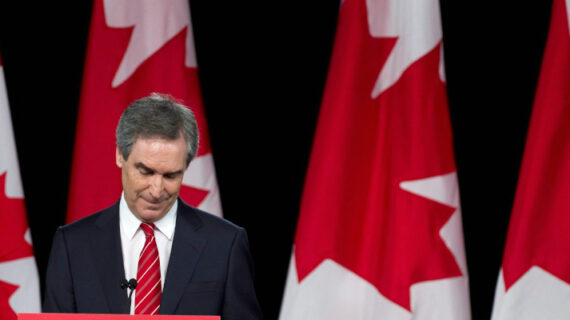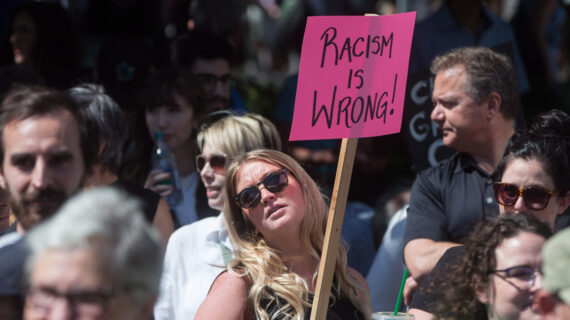In May of this year, almost half of the people employed in Ottawa were still working from home. This figure stands at more than double the national rate.
Thousands of public servants in the National Capital Region (NCR) who began working from home at the onset of the COVID-19 pandemic have not yet returned to their offices. Large towers owned or leased by the federal government remain largely unoccupied and unused save for routine maintenance and inspection.
The switch to remote work has been transformative, and possibly permanent. On March 16, 2020, the Treasury Board of Canada Secretariat (TBS) stated public servants were to begin working remotely “wherever and whenever possible”.
TBS president Mona Fortier has since said hybrid work is the future for public servants. Each federal department and agency will be responsible for developing its own hybrid work system.
This shift to permanent hybrid work for the federal government will have implications across the country, but nowhere more than Ottawa/Gatineau due to their high proportion of government employees. From March 2017 to March 2021, an average of 41.8 percent of all public servants in Canada worked in the NCR.
According to the Government of Canada, there were 127,092 public servants working in the NCR in March 2020. That amount increased to 134,817 in March 2021, just over a year after the pandemic began.
The federal government has been criticized for continuing to leave large office buildings in downtown Ottawa deserted throughout the pandemic. Critics, like Conservative MP Marc Dalton, have called on the federal government to end its leases on empty buildings or sell the ones it currently owns.
There were already concerns in 2016 about vacated buildings in the NCR either owned or leased by the federal government. Their cost at the time was more than $40 million in upkeep.
A spokesperson from Public Services and Procurement Canada (PSPC) says the department spent an annual average of $564 million over the last three fiscal years on maintaining and operating federal government buildings in the NCR.
The story of continued remote work for the public service is one of more than vacant offices, however. Empty federal buildings have hurt Ottawa’s downtown businesses. A crucial number of their customers were public servants commuting from Ottawa’s residential neighbourhoods and suburbs.
Devinder Chaudary owns the Aiana Restaurant Collective on O’Connor Street, a short walk from Parliament Hill. It opened in August 2020.
“We opened after the onset of the pandemic. We were expecting approximately 50 percent of our guests from the federal workforce,” says Chaudary. “With less than 20 percent of the federal workers returning to work at all office towers surrounding our restaurant, we experienced a significant adverse impact.”
According to Chaudary, Aiana’s revenue is less than 35 percent of their original projections. He expects public servants to return to in-person work downtown.
It was reported in August by the Professional Institute of the Public Service of Canada (PIPSC), which represents 70,000 public servants, that just 10 percent of their members want to return to their offices full-time. About 60 percent want to work from home permanently, and 25 percent want a hybrid system.
“The last two years have been devastating for small businesses in downtown Ottawa. The business model of almost every business in downtown is based on nine-to-five foot traffic,” says Chaudary.
Stuart MacKay is running for Ottawa City Council for the Somerset Ward in October’s municipal elections. Somerset contains much of Ottawa’s downtown core, including the neighbourhood of Centretown. MacKay believes the model for downtown businesses has to change.
“We’re not going back to the Ottawa of 2019, and businesses will have to realize that,” says MacKay. “Already we’ve seen some businesses in the downtown core pivot from serving a commuter crowd and instead reaching out to the thousands who already live in the downtown core.”
MacKay says that many of the older empty federal buildings in Ottawa are ripe for redevelopment into residential buildings. He argues this will create new opportunities for local businesses, like grocery and hardware stores. As a result, MacKay says downtown will become a residential rather than commuter neighbourhood.
“There is a huge opportunity to create a brand new downtown community in Ottawa,” says MacKay.
Michelle Groulx is the executive director of the Ottawa Coalition of Business Improvement Areas. She says Ottawa is experiencing something economists call the “Donut Effect”, where activity in the city centre has been gutted and transferred to surrounding suburbs, like Kanata and Nepean.
With summer ending and seasonal tourists departing, Groulx is nervous about how the onset of fall and winter will affect the Ottawa core’s remaining businesses.
“There are, within 500 meters, six office buildings that are empty, a hundred thousand people who are not there, and that does impact the economy that’s surrounding it,” says Groulx. “There are businesses who are going to be considering closing come November this year.”
Groulx says the federal government must make a decision regarding the empty buildings and have a plan for the fall.
“Either tell people to go back to work or make a solid plan on what to do to make up for the lack of workforce,” says Groulx. “Convert buildings into mixed-use and residences and things like that, but there has to be that fall plan and it has to happen.”




